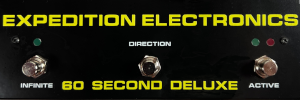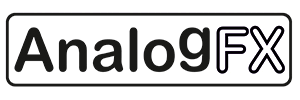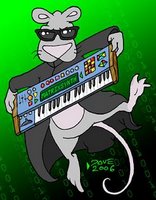Note: Auction links are affiliate links for which the site may be compensated.
via this eBay listing
"Titled after a large M-type asteroid, 16 Psyche aims to contextualise concepts related to complex configurations of feedback and phase modulation. Inspired by the ideas of composer John Chowning and mathematician Alexander Grothendieck. The core 16 configurations of 16 psyche expose the diversity of the protocore and the rich experimentation to gain using the 5 pillars of its foundation in depth. the infinity function groupoids, quadrilateral non linear transfer functions, twisted division ring of fractions, through zero phase modulations, and non linear resonant feedback windows. Super unique synth... Sounds amazing. Includes power supply and banana jacks."
Showing posts sorted by date for query JOHN CHOWNING. Sort by relevance Show all posts
Showing posts sorted by date for query JOHN CHOWNING. Sort by relevance Show all posts
Tuesday, April 01, 2025
Tuesday, October 29, 2024
Buchla/Tiptop 259T | A Legend Revived
video upload by Cinematic Laboratory
"I don't think this module needs any introduction in Eurorack. Don Buchla inspired countless complex oscillators before it inspired Serge Tcherepnin and digital FM pioneers like John Chowning who brought FM on a chip to Yamaha. The 259 is a landmark VCO. One could assume it would old compared to modern gear like the DPO, Cs-L, Furthrrr, Brenso, Verbos CO and many more, but the 259 has a unique sound you will not find anywhere else.
There's 50 years between the 259c and the Tiptop recreation. A lot has changed. The original featured eight vactrols, but the T has none due to Hazardous Substance Regulations (RoHS). It's fair to say it's impossible to stay faithful. Autotune wasn't finished yet, it relied on the forthcoming 300 series that never took off. Remote/local control relied on Easel programming card tech which is useless in its eurorack incarnation. Tiptop decided to add ART support, a proprietary protocol which supports autotuning VCO's.
Real Buchla 259's are extremely rare, they're mostly faithfully recreated clones. So I had no idea how the real thing sounds and the 1M $ question is obviously 'does it sound the same'. Spoiler alert: it does. This video also concludes my 259 origin story, so it's episode 04 in the 259 playlist, and episode 09 in my Tiptop 200 series playlist. It's a bit confusing but it it makes sense to me.
Bottom line, it's a beauty."
Wednesday, August 21, 2024
EMEAPP Interviews: JOHN CHOWNING
video upload by EMEAPP
"The advent of digital FM synthesis changed the trajectory of modern music production and performance. This inaugural episode of EMEAPP Interviews: focuses on the life and work of composer and innovator John Chowning who discovered and developed this concept. Join us as Mike Hunter spends some quality time with John discussing how it all came about, it might not be what you expect!"
Additional posts featuring JOHN CHOWNING
Monday, August 05, 2024
John Chowning, Computer Music, DX7 & FM Discovery
video upload by Anthony Marinelli Music
"It was an honor for me to interview John Chowning who is directly responsible for the way we create music today in every genre! His visionary ideas have profoundly shaped contemporary music creation, including the integration of computers, AI, digital synthesis, sound sharing, and surround sound.
He stands as a monumental figure in 21st-century music, renowned for his pioneering contributions as a composer, musician, and educator. As the founding director of the Center for Computer Research in Music and Acoustics (CCRMA) at Stanford University, Chowning made groundbreaking strides in the field. His historic discovery of FM synthesis not only became one of Stanford’s most valuable patents but also paved the way for Yamaha’s DX7 synthesizer through their licensing of FM sound synthesis technology.
Another important aspect of Chowning's work is the simulated motion of sound through physical space creating an illusion of a continuous 360-degree space using only four speakers. John’s boundless curiosity and groundbreaking achievements have established him as a bright shining beacon of inspiration for musicians everywhere.
00:00 - Cold Open
00:42 - intro
02:27 - Read to Discovery
06:15 - Stanford & Early Electronic Music
14:26 - Discovering FM Synthesis
19:25 - The FM Enlightenment
23:14 - Yamaha DX7
31:09 - Synclavier VS Yamaha
36:02 - FM Made Simple
43:04 - The Power of Timbre
51:09 - Where are we now?"
Monday, July 08, 2024
Clan Analogue Accepting Contributions for Upcoming FM Synthesis Compilation Album
This one is in via supporting member Nick Wilson.
Deatils via Clan Analogue:
"Clan Analogue are seeking tracks for their new compilation album, a celebration of FM synthesis.
Just over 40 years ago, in 1983, Yamaha released the DX7 synthesizer and inaugurated a new age of digital FM synthesis. To celebrate the rich history of this innovation in sound creation, Clan Analogue are looking for new explorations of FM synthesis for their next compilation album. FM synthesis takes many forms. Whether you use a classic Yamaha DX7 or its Dexed emulation, Operator in Ableton Live or Native Instruments’ FM8, FM-patched modular rigs or analogue synths with FM functionality, your contributions are welcome.
FM synthesis was the sound of funky basslines and keyboard riffs in many 80s pop hits but was also heard in the hypnotic ambience of Brian Eno and experimental compositions by FM guru John Chowning. Whatever your inspiration, we invite you to move beyond the preset to explore sounds of the future, the past or a sideways alternative reality.
Submissions are being accepted up until the 31st of July."
See Clan Analogue for additional details on how to enter.
Saturday, May 18, 2024
Stanford CCRMA open house, day 1
video upload by SynthAddict
The above is a walkthrough of a Stanford CCRMA open house from Thursday the 16th by supporing member SynthAddict. Take a look at what he walks into when he enters the building. A Yamaha GS1 with working voice programmer. The GS1 was the first commercial FM synthesizer released in 1980, three years prior to the DX7. John Chowning, discoverer of FM synthesis performed that night. According to SynthAddict: "The Chowning curated show last night was very eye opening - so much cool electronic music even going back to the 60s and it was digital."
And below :) "Today I got a shot of the Yamaha power synth stack in the lobby, with the best baseball cap on top. 😀"
Synth Addict
Update: looks like the stream was here: https://ccrma.stanford.edu/live/. It's not working for me at the moment, but feel free to check and comment if it works for you.
Sunday, May 21, 2023
Like a Science Lab Overtaken by the Horrors of the Cosmos | Make Noise Spectraphon
video upload by HAINBACH
"Make Noise asked me to demo their new collaboration with Tom Erbe, the soundhack Spectraphon. To properly explore it I asked them if they could adapt their beautiful Tape and Microsound system around it. In this video I explore this "Spectral Sound System" on its own, with other synthesizers, samples and field recordings. I find it adds a unique texture to sound which reminds me of John Chowning's works, the alien worlds of early DSP."
Sunday, March 05, 2023
FM Synthesis Made Easy on Aalto Modular Synth for Your Computer by Madrona Labs
video upload by Madrona Labs
"Try patching in the DAW on Aalto Modular Soft Synth VST today.
Free demo download at madronalabs.com
FM SYNTHESIS!
By using two simple waveforms — one, as the audible 'carrier' whose frequency is modulated by the other (our LFO) — we can create harmonic or inharmonic tones using very rapid vibrato, based on the frequencies of these waveforms and the depth of the modulation.
FM synthesis was first discovered in the 1960’s by an ex-GI turned artist, John Chowning, who was initially scorned by his academic composer peers for his desire to make music with an //inhumane//computer. The speed by which a computer can modulate a waveform created new sounds beyond the capabilities of acoustic and analog instruments: the birth of a new sound! ✨
We can thank FM synthesis for the sounds of the 1980’s w the popularization of the Yamaha DX7 which allowed FM synthesis to infiltrate video games, movie soundtracks, and of course the power ballads! (Take My Breath Away! Take On Me!)
You can try FMing on Aalto w a free demo download at madronalabs.com ///
// What FM sounds will you make on Aalto?
🌒🕹💥 #madronalabs #fmsynthesis #modularsynth #modularsynthesis #vst #vstplugins #1980s #aaltosynth"
And a short:
Aalto: A Modular Synthesizer for Your Computer (Space Kit!)
"Madrona Labs makes Modular Synthesizers for Your Computer. Try a free demo-download of Aalto at madronalabs.com || This patch preset is called Space Kit-- Aalto comes with a ton of preset patches made by synth wizards from around the world so that you can go modular today, even if you're still learning.
Aalto's complex oscillator and lopass gate modules are a modern take on Don Buchla's classic West Coast designs. Aalto's advanced capabilities make it an endless playground for the seasoned modular synthesist, while its accessibility and ease of working in the DAW makes it a perfect launching point for those new to modular.
If you want to learn how to patch in the DAW and get those modular sounds at a fraction of the price of a hardware rig, try Aalto, by Madrona Labs.
FREE DEMO DOWNLOAD: madronalabs.com/products/aalto"
Sunday, February 05, 2023
Buchla 259 - Episode 01 - In the Beginning...
video upload by Cinematic Laboratory
"Many - if not all - contemporary complex oscillators are inspired by Buchla's original 259 from the 1970's. I don't think there's anything before that, except maybe the 258 ('60s) and FM radio ('50s). John Chowning is considered the father of digital FM synthesis - also in the 70s - but even in 2017 scientists were breaking their heads over 'how to make a digital wavefolder'. I guess eurorack would be far less interesting without mr. Buchla's work. In this episode I'll focus on the main/principal oscillator of the complex VCO design. I am unable to hear the original sound of the 259, but the Furthrrrr Generator from Endorphins is the most faithful recreation I know. We'll check out the DPO and the Cs-L while being guided by the 259's panel (thanks to mr. Todd Barton for shooting some great images), but even mr. Barton's 259 is a clone. I learned a lot by just looking at the panel. The 'autotune' on the original is not implemented on the clone PCB's so DIY people wonder how it would have worked. So this video contains inevitable speculation but even that is very inspiring. I'll try to get a Verbos CO for episode 02, since Mark Verbos actually built original 259's in Buchla's garage. It brings back memories and visions I can't possibly have, but it only confirms the 259 is - and will always be - special."
Thursday, January 06, 2022
Acids Neurorack - The First Deep AI-based Eurorack Synthesizer
video upload by Acids Team - Ircam
Note Artisan Electronics has a Neurorack module system (4:52 here), however it does not appear to be AI based. There is also this user labeled Eurorack system with "brainwaves/EEG signals as source of modulation (the Neuro portion of it)", but again no AI (there is also soundmachines' BI1brainterface (no AI). (Update: there was also the Hartmann Neuron and Jomox Neuronium, both based on neuronal networks.) As for AI applied to synthesis in general, you can find posts mentioning artificial intelligence here. I believe the earliest reference would be John Chowning in 1964: "Following military service in a Navy band and university studies at Wittenberg University, Chowning, aided by Max Mathews of Bell Telephone Laboratories and David Poole of Stanford, set up a computer music program using the computer system of Stanford University's Artificial Intelligence Laboratory in 1964."
Description for the above video:
"The Neurorack is the first ever AI-based real-time synthesizer, which comes in many formats and more specifically in the Eurorack format. The current prototype relies on the Jetson Nano. The goal of this project is to design the next generation of music instrument, providing a new tool for musician while enhancing the musician's creativity. It proposes a novel approach to think and compose music. We deeply think that AI can be used to achieve this quest. The Eurorack hardware and software have been developed by our team, with equal contributions from Ninon Devis, Philippe Esling and Martin Vert."
https://github.com/ninon-io/Impact-Synth-Hardware/
http://acids.ircam.fr/neurorack/
More information
 Motivations
MotivationsDeep learning models have provided extremely successful methods in most application fields, by enabling unprecedented accuracy in various tasks, including audio generation. However, the consistently overlooked downside of deep models is their massive complexity and tremendous computation cost. In the context of music creation and composition, model reduction becomes eminently important to provide these systems to users in real-time settings and on dedicated lightweight embedded hardware, which are particularly pervasive in the audio generation domain. Hence, in order to design a stand alone and real time instrument, we first need to craft an extremely lightweight model in terms of computation and memory footprint. To make this task even more easier, we relied on the Nvidia Jetson Nano which is a nanocomputer containing 128-core GPUs (graphical unit processors) and 4 CPUs. The compression problem is the core of the PhD topic of Ninon Devis and a full description can be found here.
Targets of our instrument
We designed our instrument so that it follows several aspects that we found crucial:
Musical: the generative model we choose is particularly interesting as it produces sounds that are impossible to synthesize without using samples.
Controllable: the interface was relevantly chosen, being handy and easy to manipulate.
Real-time: the hardware behaves as traditional instrument and is as reactive.
Stand alone: it is playable without any computer.
Model Description
We set our sights on the generation of impacts as they are very complex sounds to reproduce and almost impossible to tweak. Our model allows to generate a large variety of impacts, and enables the possibility to play, craft and merge them. The sound is generated from the distribution of 7 descriptors that can be adjusted (Loudness - Percussivity - Noisiness - Tone-like - Richness - Brightness - Pitch).
Interface
One of the biggest advantage of our module is that it can interact with other synthesizer. Following the classical conventions of modular synthesizers, our instrument can be controlled using CVs (control voltages) or gates. The main gate triggers the generation of the chosen impact. Then it is possible to modify the amount of Richness and Noisiness with two of the CVs. A second impact can be chosen to be "merge" with the main impact: we will call this operation the interpolation between two impacts. Their amounts of descriptors are melt to give an hybrid impact. The "degree of merging" is controlled by the third CV, whereas the second gate triggers the interpolation.
Monday, April 12, 2021
XILS-lab Introduces KaoX Virtual FM Instrument
video by xilslab
"XILS-lab creates KaoX as virtual instrument inspired by legendary FM synthesizer bolstered by virtual analogue and chaotic algorithms
GRENOBLE, FRANCE: virtual instrument- and effect plug-in-specialising software company XILS-lab is proud to announce availability of KaoX — a virtual instrument inspired by a legendary FM (Frequency Modulation) synthesizer, albeit bolstered by virtual analogue sound synthesis and additional chaotic algorithms in an advanced two-layer architecture allowing for a powerful sound creation tool to fuel DAW-driven synthesizer dreams with a much more easily understood signal path than its iconic FM forefather — as of April 12…
To appreciate its iconic inspiration is to truly appreciate the power of KaoX, XILS-lab’s latest virtual instrument. Indeed, the early-Eighties synthesizer market was dominated by analogue synthesizers using analogue circuits and analogue signals to generate sounds electronically, which, when made available as programmable polysynths with patch storage, were costly with limited polyphony. Putting paid to that dominance, an Eighties-dominating 16-voice FM synthesizer changed course — changing the course of musical history in the process — by generating sounds via frequency modulation, a form of sound synthesis whereby the frequency of a waveform is changed by modulating its frequency with a modulator. Mass manufactured using very-large- scale integration chips by a Japanese giant of a company who had licensed the technology from Stanford University, California — composer, musician, and professor John Chowning developed the digital implementation of FM synthesis while there, the world’s first commercially-successful digital synthesizer subsequently sold over 200,000 units within three years — around 20 times more than the most iconic analogue synthesizer of all time sold in its impressive decade-long lifespan — and its preset sounds soon became staples of the Eighties pop pantheon with E PIANO 1 purportedly ending up on 40% of the US Billboard Hot 100 chart toppers throughout 1986. Therein lay the rub. Really complex menus and a lack of conventional controls meant that few learned to program the comparatively keenly-priced instrument in depth — despite FM synthesis lending itself to creating brighter, glassier sounds, as well as imitative acoustic sounds so much better than its instantly unfashionable analogue adversaries, programmable polyphonic or otherwise. Of course, fashions change with time and technology; the instrument in question has long since fallen out of favour. Although analogue synthesizers — somewhat ironically — are now more commonplace than they ever were with a perceived warmth of sound and appealing hands-on control working in their favour, the convenience of an ITB (in the box) workflow with DAW-driven virtual instruments and effect plug-ins has far from lost its appeal for today’s music-making masses. Time to revisit the wonderful world of FM synthesis with a modern-day twist? Knowingly, KaoX does just that. After all, as a virtual instrument- and effect plug-in-specialising software company, XILS-lab loves to create tools that inspire its users to create more imaginative music than they ever dreamed possible!
Put it this way: with KaoX, XILS-lab has created a virtual instrument inspired by that legendary FM synthesizer, albeit bolstered by virtual analogue sound synthesis and additional chaotic algorithms in an advanced two-layer architecture allowing for a powerful sound creation tool to fuel DAW-driven synthesizer dreams with a much more easily understood signal path than its iconic FM forefather since said signal path is easily understood through the use of illuminated modules in a GUI (Graphical User Interface) that is equally easy on the eye. KaoX’s knowing nod towards the preset-powered popularity of its iconic FM forefather is immediately obvious for all to see and hear in an easy-to-tweak simplified view allowing its UP (upper) and LO (lower) synthesizer layers — each with independent synthesis modules — to be combined in three different ways. Working in single mode, only the selected layer is active and heard, while both layers are active and heard in SPLIT and DOUBLE modes — the lower part of the keyboard playing the LO layer and the upper part of the keyboard playing the UP layer in the case of the former, while both the UP and LO layers are simultaneously played across the keyboard in the case of the latter. Limited controls are available in this simplified view, including TUNE, DRIFT, GLIDE, VIBRATO, FREQ (vibrato frequency), DEPTH (vibrato), W (wheel), TREMOLO, FREQ (tremolo frequency), and DEPTH (tremolo), plus CHORUS, DELAY, PHASER, and REVERB effects, enabling users to easily play presets and to tweak them accordingly — adding vibrato and tremolo or switching effects on and off, for instance.
Alternatively, activating an advanced settings view brings the wonderful world of KaoX into full view, allowing more adventurous users access to the virtual instrument’s internal modules to tweak or change any parameter therein, aided by contextual help windows, while active modules are helpfully illuminated. FM synthesis options are available on each of the two available layers with eight operators grouped in two banks with independent pitch — perfect for creating chorus-like FM sounds or punchy stereo patches — and two outputs (O1 and O2). Each FM OPERATOR features one LFO (Low Frequency Oscillator), one envelope, WHEEL and VEL (velocity aftertouch) access, two user-definable external modulators (assignable to any KaoX modulation source), KEYB (keyboard follower) 2D pad, RATIO or FIXED frequency selection, and a lowpass filter. Furthermore, virtual analogue synthesis options are also available on each of the two available layers with two continuous waveform analogue oscillators (ANALOG OSCILLATOR 1 and ANALOG OSCILLATOR 2), two zero-delay-like analogue filters (FILTER 1 and FILTER 2), four D-ADSR envelopes, and four VCA outputs for bringing a depth and warmth to the sound creation table. That said, KaoX also allows its users to create sounds that they had never thought possible, thanks to two chaotic oscillators (CHAOS OSCILLATOR 1 and CHAOS OSCILLATOR 2) and two chaotic ring modulators (CHAOX 1 and CHAOX 2). And as if that was not enough to keep committed sound creators seriously satisfied, KaoX comes complete with a flexible four-track step SEQUENCER, where each track can be assigned to the UP or LO layer with independent sustain and gating or used as a modulation source.
Sound-wise, KaoX comes packed with 500-plus presets programmed by world-class sound designers Mikael Adle, Soundsdivine, Status, Nori Ubukata, Tom Wolfe, Xenos, Yuli-Yolo, Zensound, and many more — more than enough to point anyone of any ability in the general direction of where they might musically want to go. Getting there is made much easier with its integrated single-window preset manager making finding the right patch for the task, managing presets and sound banks, as well as creating custom tags, an efficient easy-going experience that could barely be dreamt of back in the early Eighties. Today the time has clearly come to revisit the wonderful world of FM synthesis with a modern-day twist and appreciate the power of KaoX, XILS- lab’s latest virtual instrument par excellence — from France with love... and all without the need for very-large-scale integration chip mass manufacture!"
Tuesday, September 22, 2020
ORIGIN OF THE DX7 & FM SYNTHESIS
madFame
"In the special episode of Synth Quest, I present the origin of FM Synthesis and the Yamaha DX7. Special thanks to Dr. John Chowning and Mr. Hiro Kato for setting my course to research this story. I consider the research in this video as the tip of the iceberg. If anyone has additional photos, information, or prototype examples, please let me know so I can update this video.
Please support this channel by subscribing and becoming a Patron:
https://www.patreon.com/madfame
TIME JUMP
0:00 Synth Quest Intro
0:35 Episode Intro
0:55 Chapter 1 - Computer Music | Max Mathews & Music I
1:42 Chapter 2 - Electroacoustic | John Chowning
4:09 Chapter 3 - FM Discovery
6:07 Chapter 4 - FM License | Stanford & Yamaha
9:46 Chapter 5 - Sound Technology | Yamaha Electones and Synthesizers
12:44 Chapter 6 - FM Development | MAD System
14:28 Chapter 7 - FM Development | TRX & #1600 (GS series & CE series)
17:25 Chapter 8 - FM Development | PAMS & DSX (DX Series)
21:34 Outro | Credits and Thanks"
Check out previous posts featuring madFame here.
Wednesday, September 11, 2019
Dr. John Chowning - The History of FM Synthesis | Knobcon 2019
2nd video added to this post. Just want to be sure no one misses it.
Tuesday, September 10, 2019
Dr. John Chowning -Keynote Address | Knobcon 2019
Published on Sep 10, 2019 Under the Big Tree
"I first met Dr. John Chowning, the discoverer of frequency modulation as a powerful algorithm for synthesis, at the Center for Computer Research in Music and Acoustics (CCRMA) at Stanford in the early 90's. He was a brilliant, kind gentleman then, and nothing has changed in the subsequent decades. I thought it important to document his address, and subsequent lecture on the history of FM synthesis, for the future. Apologies for the sound quality - there was an enormous air conditioner running full blast behind him. But the substance is what counts, and hearing the words of this giant of the synthesizer realm."
Also see: MMTA SYNTHFEST 2013: Dave Bristow & The History of Yamaha FM Synthesis
Update:
Dr. John Chowning - The History of FM Synthesis | Knobcon 2019
Published on Sep 11, 2019 Under the Big Tree
"Dr. John Chowning is a legendary scientist, musician, and composer best known for the discovery of frequency modulation (FM) synthesis for musical applications. He did not invent the Yamaha DX7 synthesizer, but he discovered the principles underlying the technology, and worked tirelessly to get it into the hands of a company that would develop it into a product. That product, the DX7, became one of the best selling synthesizers of all time.
Dr. Chowning's lecture at Knobcon 2019 delves into the history of the discovery of FM, as well as detailed information on how it works, ending with the creation of the DX7. This discussion is dense and scholarly, but has charts and animations to help explain the principles of the topic. It is a long lecture, but will bear fruit to the student of electronic music that is willing to delve in.
My apologies for the quality of the camera work - it was hand held for two hours. But I hope that the quality of the content transcends the quality of the recording."
Friday, August 23, 2019
Knobcon Announces Speaker Lineup
via Knobcon:
"Since 2012, Knobcon has consistently delivered high quality electronic arts content, and this year is no different. From the very basics of electronic sound all the way to FM synthesis theory from its creator himself, there is something here to interest anyone that plays an instrument that plugs into the wall.
Saturday, September 7 2019
The Basics of Synthesis
Marc Doty, the undisputed king of YouTube synthesizer videos, provides as comprehensive a primer about synthesis which could be reasonably expected to fit in ninety minutes.
Summit: Novation’s Flagship Synthesizer
Novation Technology Evangelist Enrique Martinez will talk through the features and technology of Summit and how it gives the serious producer or performer everything they need to design and play stunning basses, leads, arps, pads, effects and beyond.
Buchla Music Easel Masterclass
Synthesiser virtuoso and discoverer of The Krell Patch, Todd Barton, demonstrates advanced patching and listening techniques using the Buchla Music Easel.
Sequencing with TORAIZ SQUID
SQUID stands for ‘sequencer inspirational device’ since it provides a feature-rich and user friendly workflow that can be used to sequence a variety of analogue and digital hardware, and software. Get an in-depth look at what the TORAIZ SQUID can do.
Sample Proof Instruments
Jon Sonnenberg explores concepts of "sample proof" instruments and the limitations of sampling as he demonstrates intentional non-repeatability as a feature in new instruments.
Sunday, September 8 2019
Ergonomics for Artist
Industrial designer Brian Alexander (Herman Miller, Design Within Reach) breaks down the correlation between cognitive processing, the physical body, and your ability to perform in the electronic music environment. He will detail key principles and practices for creating an optimal workflow from studio to stage.
Warm Star Electronics' Orbit
Experience a live modular infomercial! Bradford Kinney of Warm Star Electronics will walk us through the world of his odd and powerful modules, including the newly-unveiled Orbit. Something will be raffled!
Learn FM Synthesis from Dr. Chowning Himself
FM synthesis has a reputation for being as impenetrable as it is dynamic. Fortunately its inventor, Dr. John Chowning, is here to help us understand it better. This is a once in a lifetime opportunity you won't want to miss!
Modular for the Masses
Extreme synth DIYer and circuit sculpture specialist Juanito Moore returns with his unique approach to synthesizer design. Learn to break free from the confines of the PCB to create functional, musical art.
The Horror of Marketing-Driven Nomenclature
The history of synthesizers has been a wild blur of technological development, visionary composition, and manic entrepreneurial spirit and as a result, synthesizer terminology can be very confusing. Presented by Marc Doty."
https://www.knobcon.com
Note Exhibitor Locations are Still Available
Friday, August 02, 2019
John Chowning Coming to Knobcon 2019
Knobcon is set for September 6-8 in Chicagoland, USA.
"The organizers of Knobcon, the world’s only synthesizer convention, are pleased to announce FM synthesis pioneer Dr John Chowning as their guest of honor.
Following military service in a Navy band and university studies at Wittenberg University, Chowning, aided by Max Mathews of Bell Telephone Laboratories and David Poole of Stanford, set up a computer music program using the computer system of Stanford University's Artificial Intelligence Laboratory in 1964. In 1967 he discovered and developed an algorithm for generating complex sounds using frequency modulation (FM). This breakthrough in the synthesis of timbres allowed a very simple yet elegant way of creating and controlling time-varying spectra. In 1977 Stanford University licensed the FM synthesis patent to Yamaha in Japan, leading to the most successful family of synthesizers in the history of electronic musical instruments.
In addition to his keynote address at the annual banquet, John will be hosting a workshop during the three-day event entitled “Learn FM Synthesis From The Man Who Wrote The Patent”
Knobcon is the world's only synthesizer convention, celebrating its eighth year. With performances, workshops, and vendors, Knobcon is a fully immersive experience. Attendees have access to an incredible playground of equipment and designers of some of today's most innovative synthesizer products.
Held in suburban Chicago, Illinois at the Hyatt Regency Schaumburg, the entire event takes place under one roof. Enthusiasts travel from all over the world to attend this annual event. Easy access by all forms of transportation makes Knobcon the most convenient synthesizer event you'll ever attend!
If you are interested in the electronic arts, this is the place for you. Be a novice or a neophyte, Knobcon is an inclusive and enjoyable experience.
For more information, vist www.knobcon.com"
Friday, January 25, 2019
John Chowning, Mark Verbos, and Dave Smith at NAMM
Thought this was a great shot.
via @SequentialLLC:
"Synth Legends! Thanks to John Chowning and Mark Verbos for visiting the @sequentialLLC room! #prophetx #prophetxl #namm2019"
John Chowning is the man who invented/discovered FM synthesis in 1967 at Stanford University.
via Wikipedia:
"Chowning is known for having discovered the FM synthesis algorithm in 1967 (Johnstone 1994; Schottstaedt 0000; Chowning 1973). In FM (frequency modulation) synthesis, both the carrier frequency and the modulation frequency are within the audio band. In essence, the amplitude and frequency of one waveform modulates the frequency of another waveform producing a resultant waveform that can be periodic or non-periodic depending upon the ratio of the two frequencies.
Chowning's breakthrough allowed for simple—in terms of process—yet rich sounding timbres, which synthesized 'metal striking' or 'bell like' sounds, and which seemed incredibly similar to real percussion. (Chowning was also a skilled percussionist.) He spent six years turning his breakthrough into a system of musical importance and eventually was able to simulate a large number of musical sounds, including the singing voice. In 1974 Stanford University licensed the discovery to Yamaha in Japan (Mattis 2001), with whom Chowning worked in developing a family of synthesizers and electronic organs. This patent was Stanford's most lucrative patent at one time[citation needed], eclipsing many in electronics, computer science, and biotechnology."
Friday, August 31, 2018
Dave Smith Instruments Rebrands as Sequential
Update: Photo from last night’s announcement party added. It’s the West Coast Synth Brain Trust. Tom Oberheim, Roger Linn, Dave Smith, Dave Rossum, and John Chowning. Quite the group!
"Sequential" (minus "Circuits") is officially back! We saw the brand name come back with the Prophet-6, but the it was still under Dave Smith Instruments. DSI the company is now officially Sequential. It's great to see the Sequential brand name back. You might recall Yamaha owned the rights but gave it back to Dave Smith back in 2015.
The official press release follows:
Dave Smith Instruments Officially Becomes “Sequential”
Dave Smith Returns to Sequential Brand to Mark 40th Anniversary of Prophet-5 Poly Synth
San Francisco, CA—August 31, 2018—In a move auspiciously timed to coincide with the 40th anniversary of his legendary Prophet-5 poly synth, Dave Smith today announced that Dave Smith Instruments will rebrand itself as “Sequential” — reclaiming the mantle of Smith’s original, ground-breaking company. Going forward, all products and services will bear the Sequential® brand.
Company founder Dave Smith explained the decision: “It seems incredible, but this month marks the 40th anniversary of the Prophet-5. That’s a huge milestone. And it felt like the right time for us to completely restore the Sequential brand and bring our journey as a company full circle. The name change also reflects the fact that our instruments are the result of a team effort. It’s not just me, it’s the entire company.”
Founded by Smith in 1974 as “Sequential Circuits,” the original incarnation of the company quickly established itself as a major innovator in the then-nascent field of electronic instruments. In 1978, Sequential Circuits’ flagship keyboard, the Prophet-5, took the music world by storm as the world’s first fully-programmable polyphonic synthesizer—and the first musical instrument with an embedded microprocessor.
Numerous other ground-breaking products soon followed, including the hugely popular Pro-One monosynth, the Prophet 600 (the world’s first MIDI-equipped instrument), the Six Trak (the first multi-timbral synthesizer), and the Prophet VS (the first instrument to feature digital vector synthesis). Sequential Circuits ceased operations in 1987 and the company’s name (shortened to “Sequential” in the mid-1980s) and assets were acquired by Yamaha. Smith went on to consult for Yamaha and Korg, developing the Wavestation and other innovations.
In 2002, Smith established Dave Smith Instruments to concentrate on solo hardware designs and released the Evolver hybrid analog/digital synthesizer. The DSI product lineup steadily grew to include the Prophet ’08, Mopho, Tetra, Tempest drum machine, Prophet 12, Pro 2, Prophet-6, OB-6, Prophet Rev2, and the Prophet X.
In 2015, with the encouragement of Roland’s Founder, Ikutaro Kakehashi, Yamaha returned the Sequential name to Smith in a gesture of goodwill. “Once Kakehashi-san and Yamaha enabled us to re-acquire the Sequential name, I knew we’d fully adopt it again when the time was right. That time has arrived,” said Smith. “The best part is that we have the same sense of excitement and enthusiasm for making the world a more creative place as we did 40 years ago. Sequential is back, better than ever.”
About Sequential
Originally launched in 2002 as Dave Smith Instruments, Sequential is helmed by legendary musical instrument designer and Grammy® award winner Dave Smith. Dave’s many accomplishments include the creation of the Prophet-5 — the world’s first fully programmable polyphonic synthesizer—and his legacy as the primary driving force behind MIDI (Musical Instrument Digital Interface).
The company’s products are used by an ever-growing roster of well-known musicians and are available from music retailers worldwide. Instruments include the Prophet-6, OB-6, Prophet Rev2, Prophet X, and the Tempest analog drum machine. Sequential is based in San Francisco, where its instruments are also manufactured. For more information, visit www.sequential.com.
Thursday, July 05, 2018
NYZ - NTE GDN => Behind the scenes with the Yamaha FB-01
Photo Credit: Calum Gunn * all other pix by NYZ *
"The new NYZ - NTE GDN tape on Conditional is just out [limited edition of 50 copies]! Matrix heard on the synth grapevine that it heavily featured the Yamaha FB-01 operating in a secret sysex mode, so he asked me if I'd write a little about how it was used. You can check the album out on the Conditional Bandcamp page here, release date July 6th =>
and have a listen while reading. Its also available from Boomkat [with track previews] =>
Boomkat review => "Blinding new batch of synth and computer music chaos from Dave Burraston’s cultishly regarded NYZ. With such a wild variation to his purist approach it’s perhaps silly to draw comparisons or contrasts, but these are patently some of NYZ’s sweeter treats, such as the curdled harmonics of ‘ARTOFNYZbitcompander’ and the funky lil’ vamps of ‘RLD syncs’ for more insatiable and curious listeners. In other words it’s fucking ace!"
and Norman Records =>
Norman Records review => "9/10 Conditional unleash this beautifully wild and playful tape from David Burraston aka NYZ. Here he harnesses the spectrum splitting potential of John Chowning’s FM synthesis to birth and animate ludicrously cute and cuddly synthetic creatures that come to life before our very ears. What even are these little mutant alien lifeforms? Where is this strange place in which they dwell?
The overall experience of imbibing these sounds is a lot like an experience I once had watching Teletubbies on acid, where I thought the little blighters were actually communicating directly to me. This world NYZ has created and its inhabitants are clearly fantasy, but it’s so brilliantly, vividly realised and skillfully executed that if you just let go of the shackles of reality and submit yourself, it can be an authentic place where these things live and breathe, eat and sleep and go through their life cycle. We get to hang out with them as they speak, sing, laugh and cry. I’d much rather hang out with these chirpy little fellows because humans are the absolute worst. For music to get a miserable, misanthropic, curmudgeon bastard like me to grin like a child holding a cookie the size of its head is quite an achievement.
This tape is just so much fun - it's like a little utopia for the most part, but there are occasional darker moments - at times it feels like the big bad wolf or some kind of predator is lurking with intent to gobble up our little friends. Burraston’s custom-built MANIAC Cellular Automata Sequencer is instrumental in giving life to these sounds - a tool that gives this work a unique voice and an unpredictable energy that seems to organically flow through his machines. This music is most certainly unconventional even by avant-garde standards, and although on the surface is definitely weird and kinda eccentric, it taps into something deeper. Like Victor Frankenstein’s unorthodox scientific experiment in Mary Shelley's novel where scientist becomes an architect of life. This place, it's lifeforms and their language seems bewilderingly genuine - a sonic virtual reality -- a hybrid analogue/digital world where what is “real” and synthetic is blurred."

So why am I interested in the strange and esoteric Yamaha FB-01, and what are these secret sysex codes? Well, first up its a nice little 8 voice FM synth, and I'm well known for being a bit obsessed with FM [see the NYZ - DRN4 Declassified article]. Secondly, its a kind of in-between synth, arriving after the first 4 operator synths, such the DX21, but before the TX81Z which featured a full microtonal tuning table. Its this inbetweeness that really interested me, and its really the only first gen sine wave only 4op that can be micro-tuned, albeit in a very roundabout way via some secret sysex codes.
Friday, January 26, 2018
Elektron Interview with John Chowning, the Father of FM Synthesis & How to Explain FM to a Child
Elektron recently announced the Digitone Digital FM Synthesizer. They've posted an interview with the creator of FM synthesis, John Chowning, on Elektronauts here. The following is the beginning excerpt including how John would explain FM synthesis to a child, meaning anyone new to FM synthesis. :) Note when he mentions vibrato depth increasing he is referring to one operator or oscillator modulating another. In FM synthesis you have different mappings of operators modulation each other. Be sure to see the full interview for more, including other topics.
"We had a good, solid talk with John Chowning, inventor of FM synthesis. Since its first musical use, FM has greatly expanded the musical possibilities of digital instruments. Its impact on every imaginable genre cannot be overstated, from contemporary classical music to dubstep. It was the synth sound of the 1980s, immortalized through the Yamaha DX7. John, however, does not refer to it as an invention. According to him, FM is a gift of nature that was just waiting to be discovered.
Now, understanding FM may seem daunting at first, as it incorporates some fundamental properties of math, music and acoustics. The beauty of John’s discovery is that (once properly used in a synthesizer) you don’t need to fully understand it. Just use your hands and ears to intuitively produce musical results that are pleasing, surprising, harmonic or inharmonic to your heart’s desire.
How would you explain FM synthesis to a child?
I would show the child how he or she might begin clapping two hands together, faster and faster and faster, them jump to the computer and show that we can make the claps even faster than the child is able to clap, and have the child listen to what happens. How the rate of claps changes from once per second, gradually through 8 times per second, to 16 times per second, all continuously increasing the rate until the child begins to hear a pitch.
At some point, I would say: 'why don’t you hum the pitch that you hear?' Now, I would do the same thing in reverse, you hear the pitch which the child has hummed, maybe something like 400 Hertz, which would be pretty close to G above middle C. Then I would reverse it, and as it slows, ask them to jump at in the moment they think they can clap that fast, and then slow down the computer-produced clap. We’ve established the fact, that when things happen at a certain rate, about 20-30 times per second, you no longer hear things as individual claps. You begin to hear things as tone quality (timbre) and then pitch.
Then I would do the same thing using the computer, with a sinusoid changing pitch — a vibrato. With a violin at hand, I would show what vibrato is — at the same pitch that the child hummed — and let my finger go up and down the fingerboard at an increasing rate. Again, jump to the computer with a sine wave at the hum pitch of 400Hz, with a vibrato depth increasing to ±40Hz at a rate of 1Hz. Then gradually increase the vibrato rate from 1Hz to 400Hz. As a last step I would gradually increase the vibrato depth to ±400Hz and we have caused the quality of the tone at 400Hz to change. All of a sudden we hear frequency modulation synthesis as a model of the original violin. That’s one way of explaining it!
It’s a phenomenon that has to do with the auditory system, and I think it’s partially understood why it happens. It can be intuitively understood when we connect it to a real-life case, like vibrato in a musical instrument, which is a special case of frequency modulation. Once we’ve got the sinusoid modulating the carrier from 1 -400 Hertz, then we can change the distance up and down the keyboard, and show how the quality of the tone changes with deviation. That’s basically how I would explain the properties of modulation rate and modulation depth to a child.
(I would also change the order in the demonstration, which is equally, if not more interesting — that is, first increasing the deviation of the 400 Hz sinusoid from ±0Hz to ±400Hz at a rate of 1Hz and then gradually increasing the rate from 1Hz to 400Hz.)"
NEXT PAGE
HOME
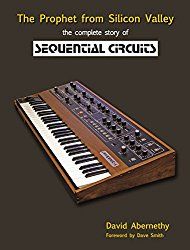
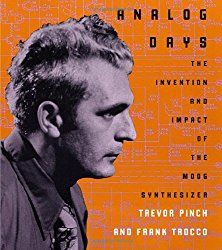
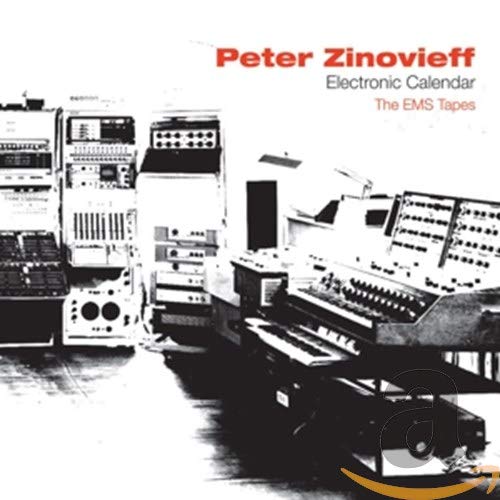
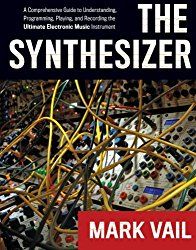
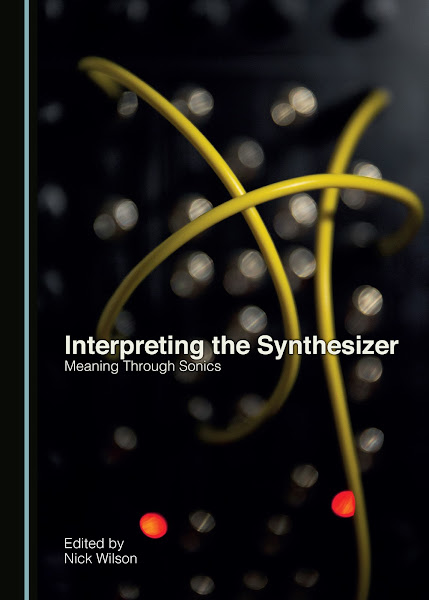
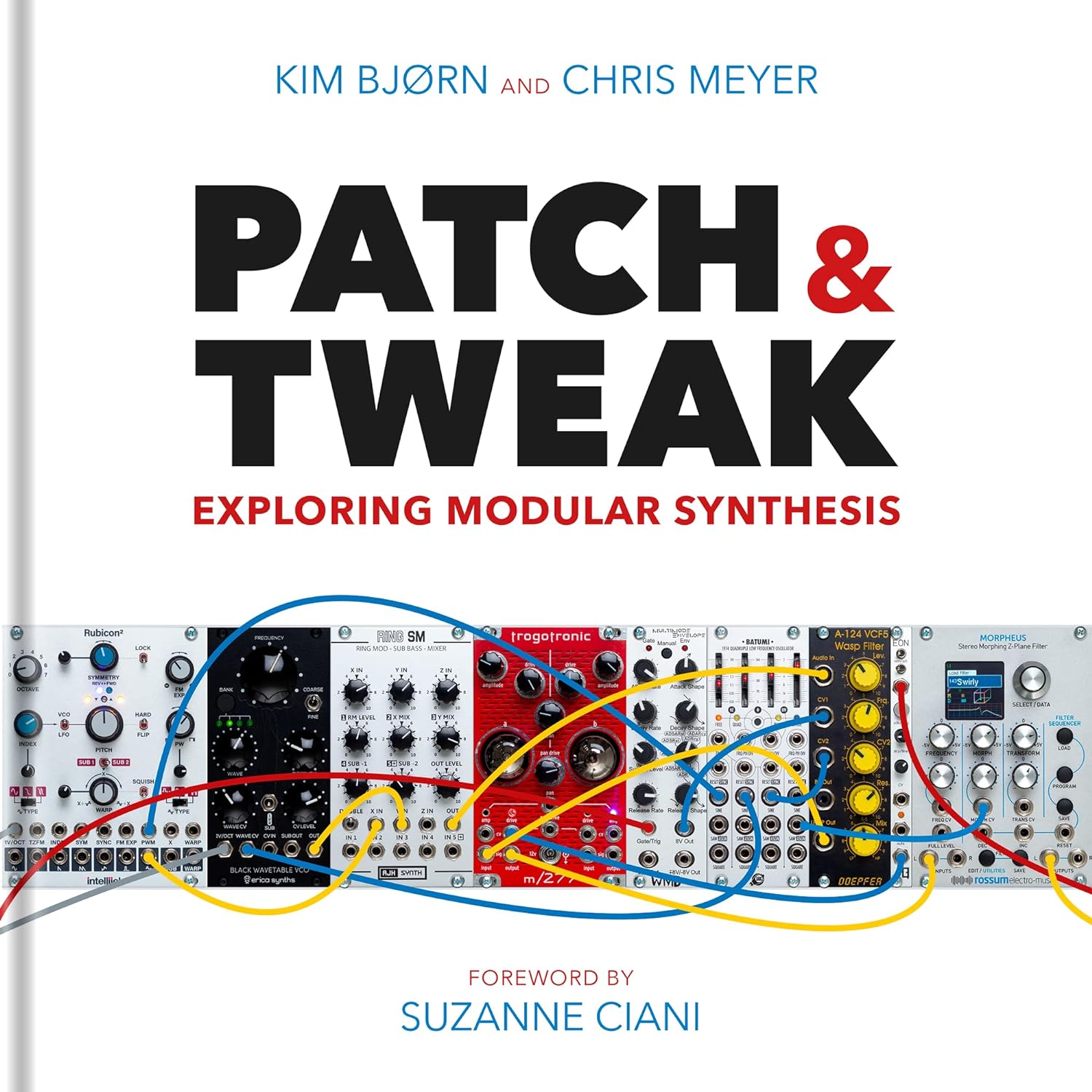
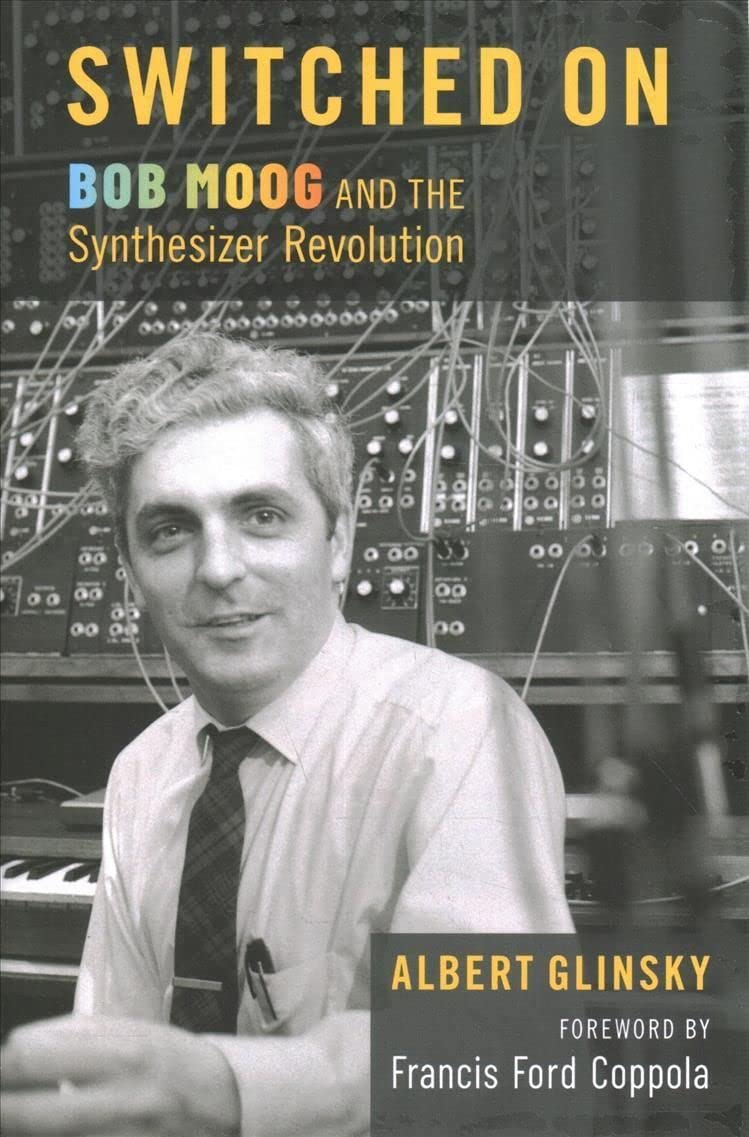
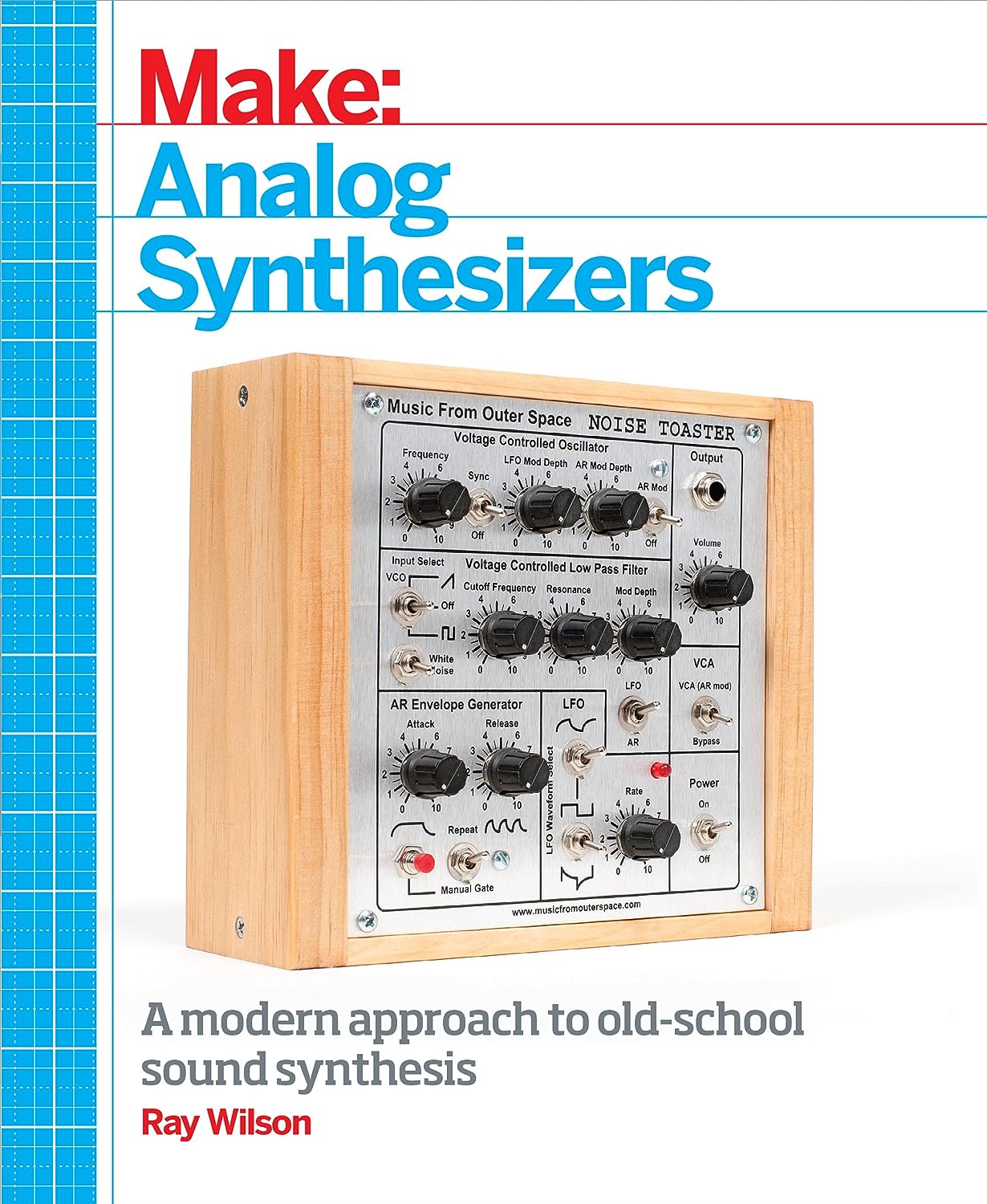
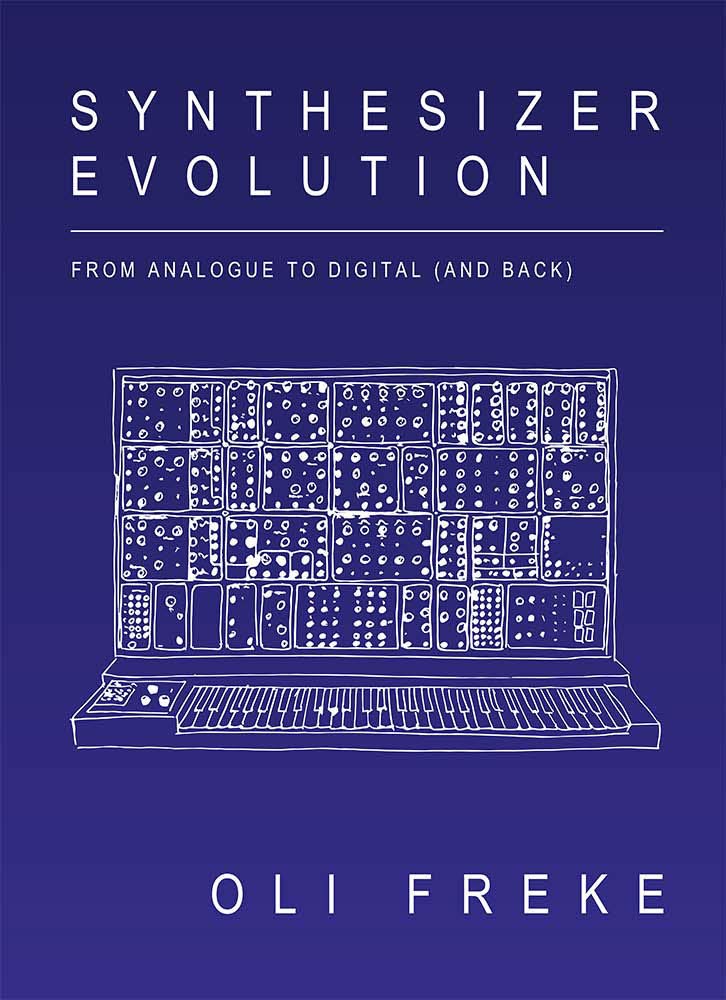
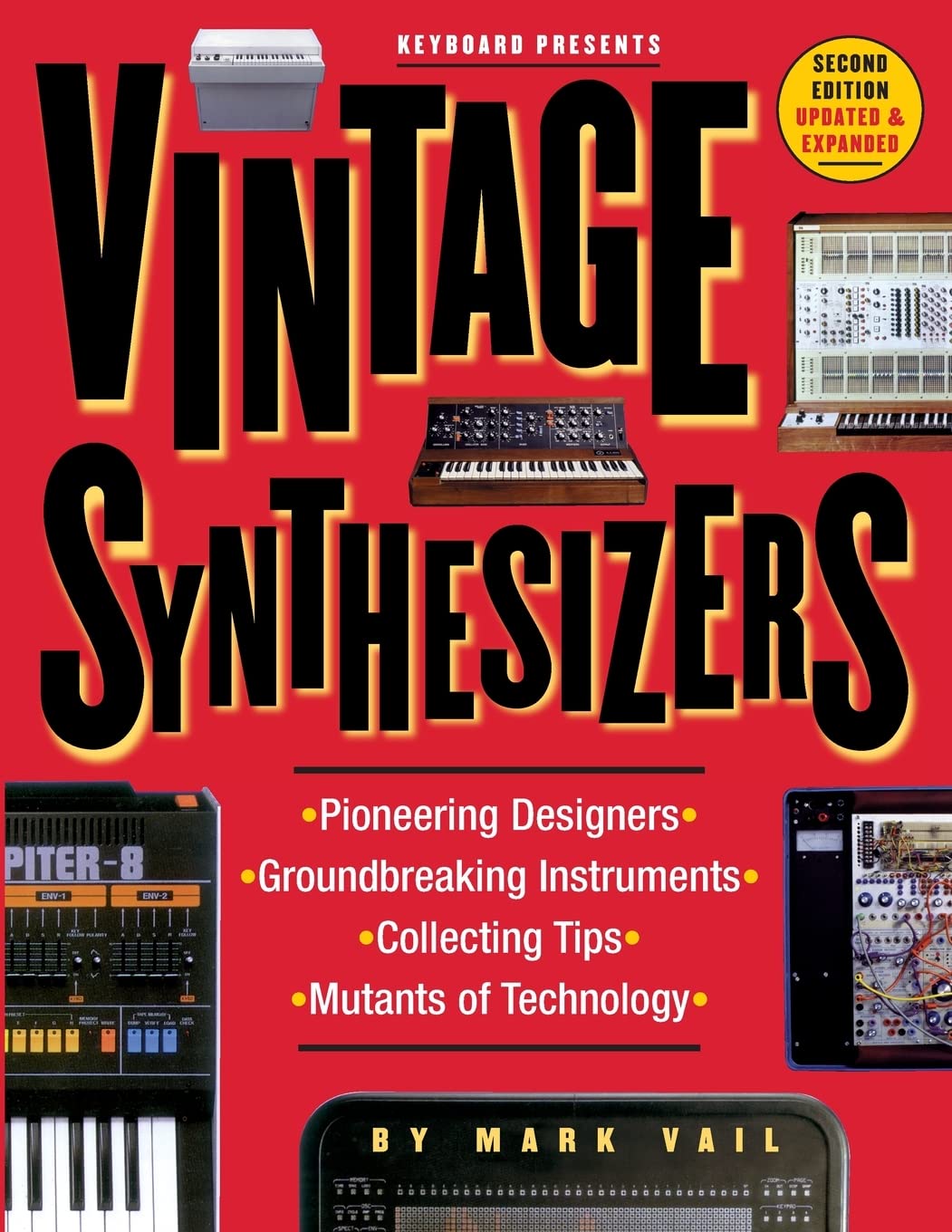
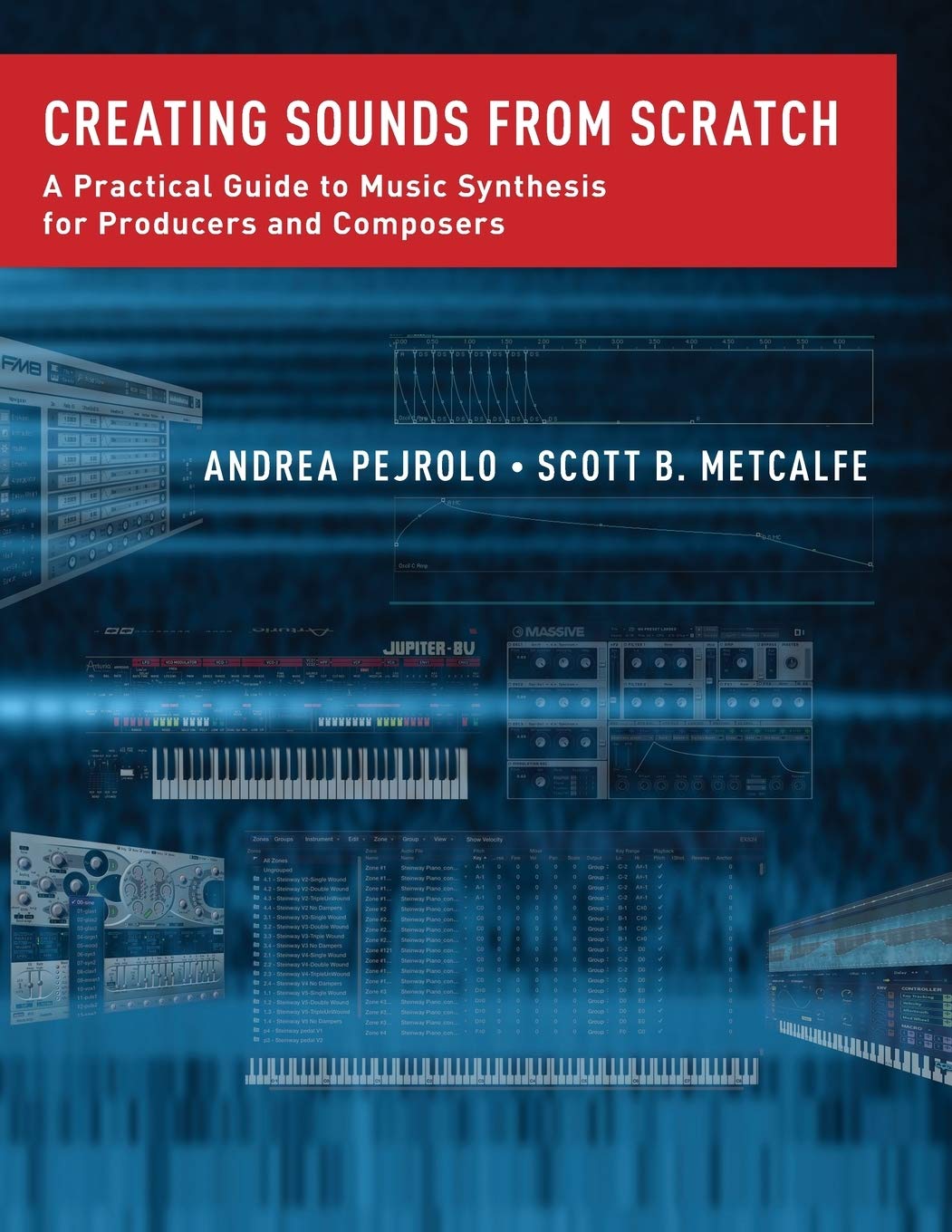
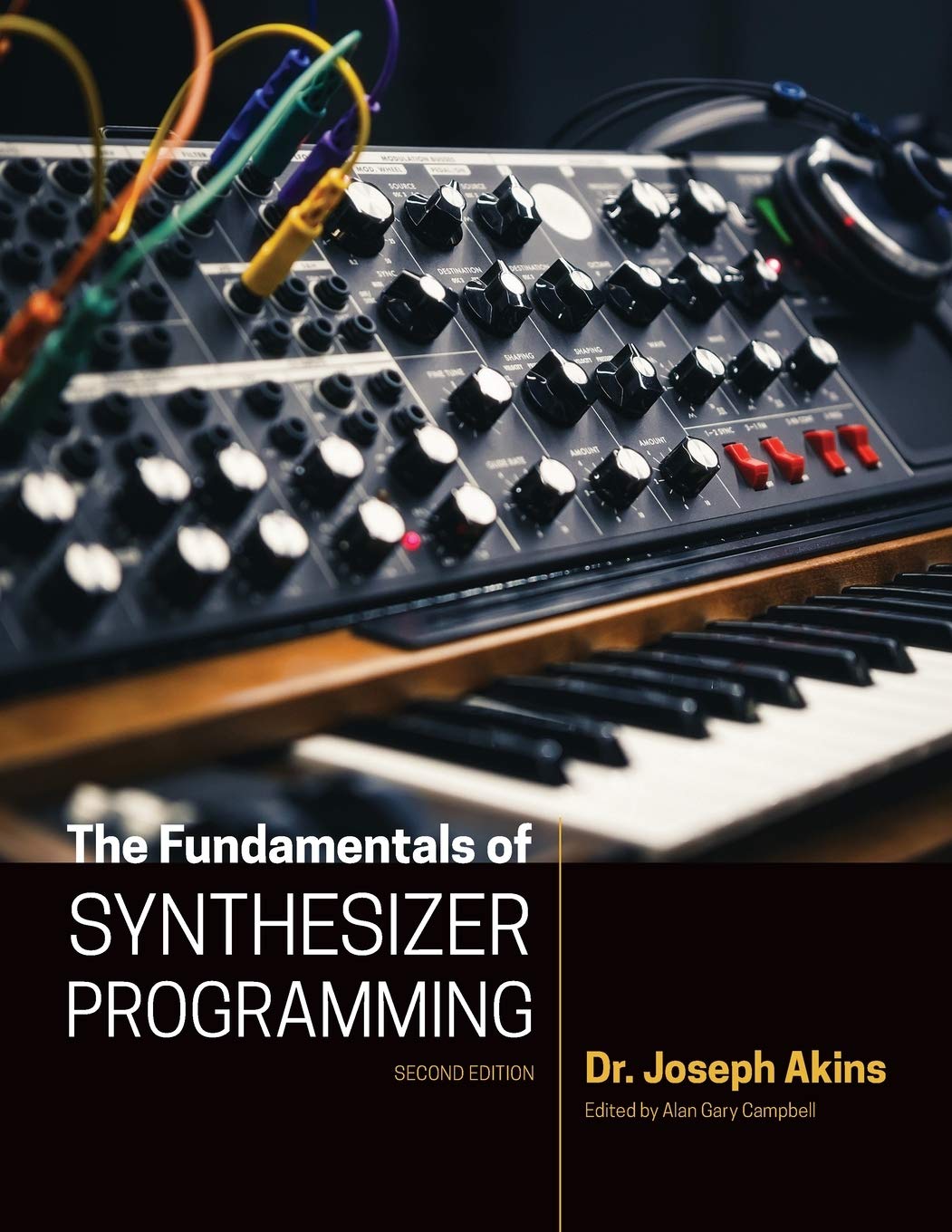

© Matrixsynth - All posts are presented here for informative, historical and educative purposes as applicable within fair use.
MATRIXSYNTH is supported by affiliate links that use cookies to track clickthroughs and sales. See the privacy policy for details.
MATRIXSYNTH - EVERYTHING SYNTH













© Matrixsynth - All posts are presented here for informative, historical and educative purposes as applicable within fair use.
MATRIXSYNTH is supported by affiliate links that use cookies to track clickthroughs and sales. See the privacy policy for details.
MATRIXSYNTH - EVERYTHING SYNTH




























